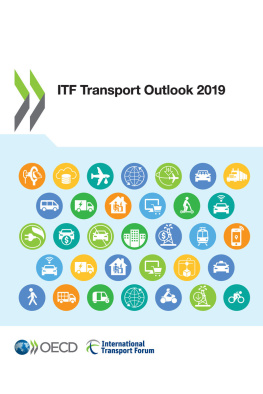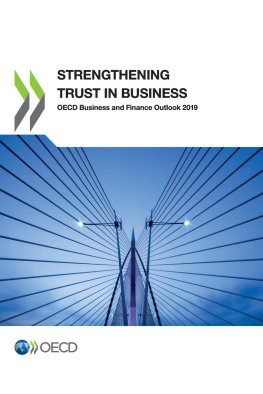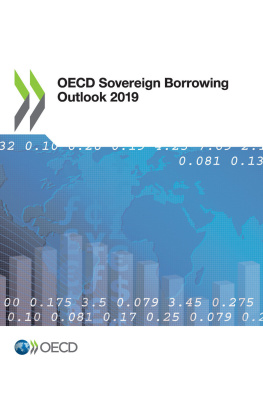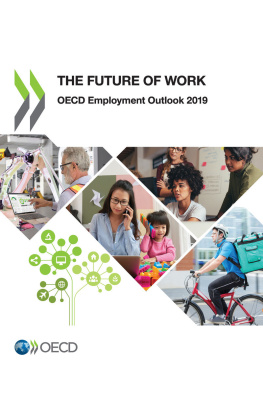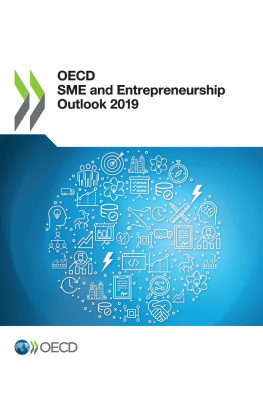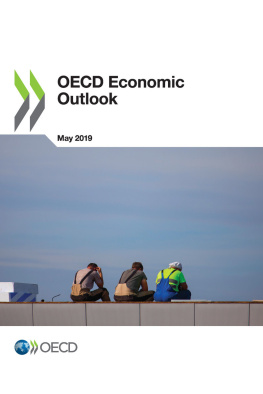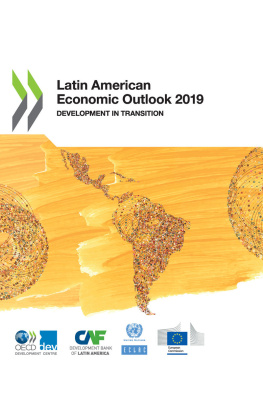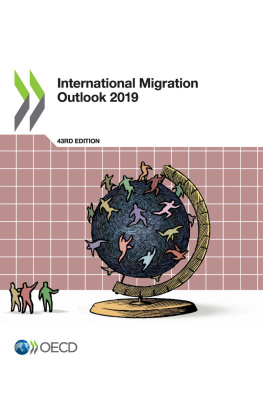ITF - ITF Transport Outlook 2019
Here you can read online ITF - ITF Transport Outlook 2019 full text of the book (entire story) in english for free. Download pdf and epub, get meaning, cover and reviews about this ebook. year: 2019, publisher: OECD Publishing, genre: Home and family. Description of the work, (preface) as well as reviews are available. Best literature library LitArk.com created for fans of good reading and offers a wide selection of genres:
Romance novel
Science fiction
Adventure
Detective
Science
History
Home and family
Prose
Art
Politics
Computer
Non-fiction
Religion
Business
Children
Humor
Choose a favorite category and find really read worthwhile books. Enjoy immersion in the world of imagination, feel the emotions of the characters or learn something new for yourself, make an fascinating discovery.
- Book:ITF Transport Outlook 2019
- Author:
- Publisher:OECD Publishing
- Genre:
- Year:2019
- Rating:5 / 5
- Favourites:Add to favourites
- Your mark:
- 100
- 1
- 2
- 3
- 4
- 5
ITF Transport Outlook 2019: summary, description and annotation
We offer to read an annotation, description, summary or preface (depends on what the author of the book "ITF Transport Outlook 2019" wrote himself). If you haven't found the necessary information about the book — write in the comments, we will try to find it.
ITF: author's other books
Who wrote ITF Transport Outlook 2019? Find out the surname, the name of the author of the book and a list of all author's works by series.
ITF Transport Outlook 2019 — read online for free the complete book (whole text) full work
Below is the text of the book, divided by pages. System saving the place of the last page read, allows you to conveniently read the book "ITF Transport Outlook 2019" online for free, without having to search again every time where you left off. Put a bookmark, and you can go to the page where you finished reading at any time.
Font size:
Interval:
Bookmark:
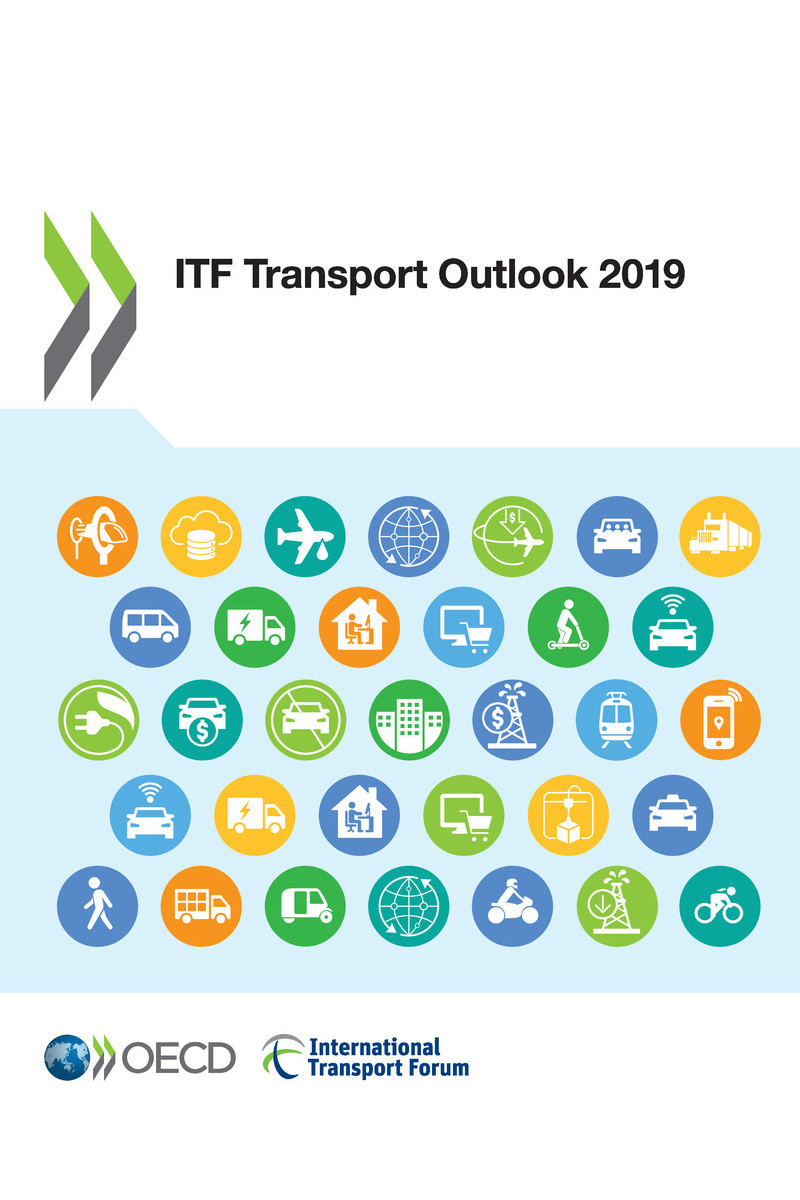
ITF (2019), ITF Transport Outlook 2019 , OECD Publishing, Paris, https://doi.org/10.1787/transp_outlook-en-2019-en .
The ITF Transport Outlook 2019 presents scenarios for the future of transport for all sectors and modes until 2050. How will demand for transport develop over the next three decades? How will this affect transport CO emissions? How could various disruptive developments affect transport? To what extent will transports future resemble its past, and to what degree will it become something altogether different?
The level of uncertainty with regard to the future path of transport is striking in all its areas. Uncertainties surround the pace of economic development, global trade and the price of oil. Uncertainties abound regarding travel behaviour and mobility patterns as well as technological progress and innovations. The sheer multitude of variables and the enormous scope of increasingly fast-paced and disruptive change render the future of transport ever more difficult to foretell.
Past ITF Transport Outlooks have addressed normal uncertainty about the future. They offered scenarios in which the speed and direction of changes in transport would shift incrementally, not going as far as to considerer changes in the fundamental scope and structure of transport activity. This is a prudent starting point when transport as a social-technical system called transport is generally mature and stable.
Yet sometimes disruptions trigger developments that foreshadow of a future radically different from a mere extension of the present. It is at these times that extrapolation as the default approach for thinking about the future becomes less helpful. As a trend emerges, humans tend to underestimate its importance for the future. Conversely, they overestimate the future significance of an already mature development. Even as forecasts no longer align with reality, we remain overly optimistic. For example, projections of road traffic volumes in many countries have far exceeded real road usage.
Transport has undergone several disruptions in the past 300 years from animal traction to machine traction, from sail to powered navigation, from coal to liquid fossil fuels. Indeed, todays transport systems is the result of disruption (notably of the introduction of the combustion engine), and it is not unreasonable to believe that by 2050 fundamental changes in the way people have access to work, to services, to goods, leisure and each other will occur.
A main focus of this Transport Outlook is an attempt to assess the impact of potential and plausible disruptions to the transport sector and to do so in a robust way by stress-testing assumptions at the core of the different scenarios. Describing the effects of a disruption that has occurred is relatively straightforward. Identifying a disruption in progress is a different and more ambiguous exercise. For the purposes of this study, disruption is defined as innovations which lead to entirely new ways of doing things or allow the previously impossible to occur.
Disruptions can occur at different levels and various scales. Some only impact one product category the introduction of synthetic rubber production and its effect on the tyre industry or the uptake of mobile ticketing for public transport, for example. Others reshape an entire sector such as centralised, computer-based ticketing for air travel or the arrival of app-based ride-sourcing for the taxi sector. Other disruptions still, though rare, have a broad impact across multiple sectors and areas of human activity e.g. the mass production of cars and the resulting changes on travel behaviour, on urban development (and real estate markets), on opportunities and economic welfare in general. Another example is the introduction of the standardised shipping container and the significance this had for freight transport, hence trade, economic activity, and ultimately global income growth.
The analysis in this Transport Outlook centres on disruptions with the potential to entail broad and wide-spread changes to existing practices and areas of transport activity. Five core factors drive disruptive changes:
Cost : new technologies and/or processes make old ones uncompetitive in terms of production costs the new ones become so cheap that old ones become unprofitable.
Quality : new technologies and/or processes raise the quality of products or services to a level that makes the old ones uncompetitive.
Customers : significant changes in consumer or business customer preferences make previous products or services unattractive compared to new ones.
Regulation : new laws or regulations no longer permit old ways of working for example environmental or labour protection rules or allow new ways of doing things that previously were not allowed.
Resources : previously important resources are no longer readily available or previously inexistent or inaccessible resources now become available.
Disruptive trends typically emerge from a combination of these factors. For instance, a change in cost combined with an improvement in quality or the convenience of a technology or service may change consumer perception of value for money, which then motivates the adoption of a new good or service. Indeed, many disruptive technologies or services are not necessarily superior to existing ones but simply provide good enough functionality at a low cost.
Much of the discourse around innovation and disruption centres on technology because of the facilitating role the latter plays. But technology alone does not cause or sustain the types of radical changes it can trigger. Further, many disruptions are aided by the parallel emergence of multiple technologies and the services they facilitate. In this respect, disruptions can better be characterised as disruptive developments, which in combination with other factors and under the right facilitating conditions can lead to change that makes previous processes, services and/or products ineffective.
Font size:
Interval:
Bookmark:
Similar books «ITF Transport Outlook 2019»
Look at similar books to ITF Transport Outlook 2019. We have selected literature similar in name and meaning in the hope of providing readers with more options to find new, interesting, not yet read works.
Discussion, reviews of the book ITF Transport Outlook 2019 and just readers' own opinions. Leave your comments, write what you think about the work, its meaning or the main characters. Specify what exactly you liked and what you didn't like, and why you think so.

